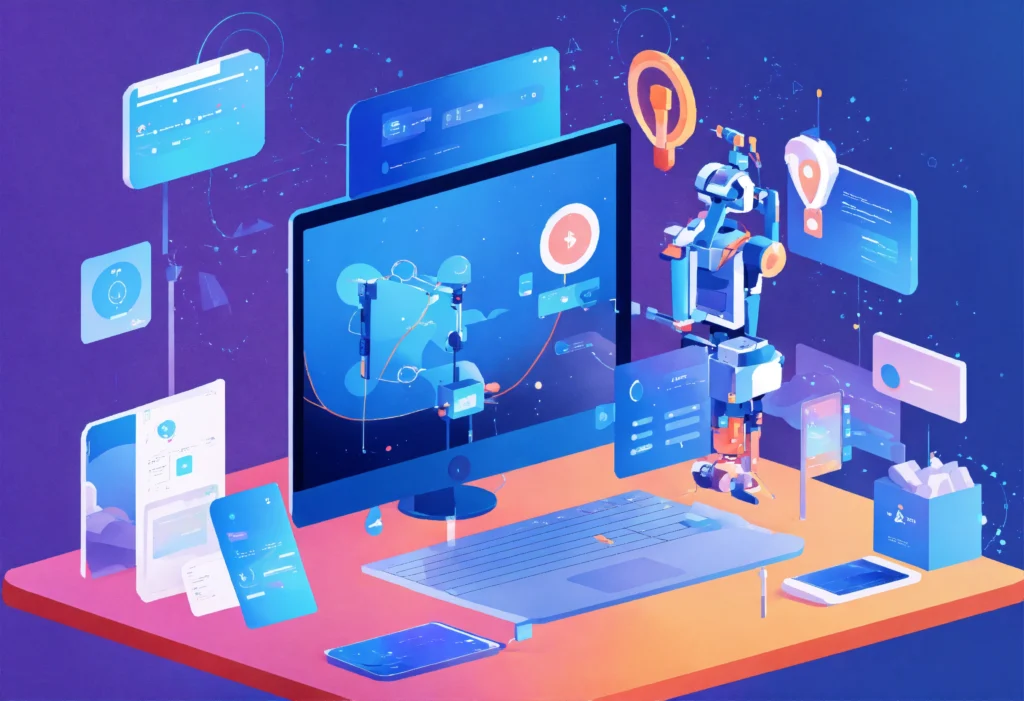Browser-Based Machine Learning Apps
Browser-based machine learning apps are redefining how users interact with artificial intelligence, making advanced ML capabilities accessible directly within web browsers—no installation or specialized hardware required. As machine learning continues to transform industries in 2025, these web-powered applications are democratizing access, streamlining workflows, and accelerating innovation across sectors.
Browser-Based Machine Learning Apps
Teachable Machine by Google
A no-code tool to train image, audio, and pose models in the browser using your webcam or microphone.
Try Teachable MachineTensorFlow.js Demos
Run machine learning models in your browser using JavaScript and pre-built TensorFlow.js demos like image classification.
Explore TensorFlow.jsRunway ML Web
Runway’s browser-based tools allow you to run AI models like image generation and video editing directly from your browser.
Visit Runway MLPlayground AI
Generate images using text prompts through Stable Diffusion models, all from an easy-to-use web interface.
Try Playground AIml5.js Examples
A friendly high-level ML library for the browser built on TensorFlow.js, with live examples like face detection and text generation.
Browse ml5.jsHugging Face Spaces
Explore thousands of live ML demos built with Gradio and Streamlit, running in your browser without setup.
Visit Hugging Face SpacesWhat Are Browser-Based Machine Learning Apps?
These are web applications that leverage machine learning models and algorithms, running computations either locally in the browser (using technologies like TensorFlow.js or ONNX.js) or via cloud APIs. Users can perform tasks such as image recognition, text analysis, data visualization, and predictive modeling—all through a standard browser interface.
Key Advantages
- Accessibility: No need for software installation or powerful hardware; users only need a modern browser.
- Cross-Platform: Apps work seamlessly on desktops, laptops, tablets, and smartphones.
- Instant Updates: Developers can roll out new features and improvements instantly, ensuring all users benefit immediately.
- Privacy: Some apps process data locally in the browser, reducing the need to upload sensitive information to external servers.
Popular Use Cases in 2025
Browser-based machine learning apps are impacting a wide range of domains:
- Education: Adaptive learning platforms personalize content based on student performance, helping learners progress at their own pace.
- Healthcare: Web apps assist in disease detection and diagnosis by analyzing medical images or patient data, improving accessibility for remote clinics.
- Finance: Fraud detection tools and risk assessment dashboards can be accessed securely via browsers, enabling real-time decision-making.
- Retail: Personalized shopping assistants recommend products and optimize inventory management, enhancing customer experiences.
- Cybersecurity: Real-time threat detection and user behavior analytics are delivered through browser dashboards, helping organizations respond faster to security incidents.
- Transportation: Route optimization and demand forecasting tools for logistics and ride-sharing services are now browser-based, improving efficiency for businesses and commuters.
- Content Creation: AI-powered generators for text, images, and videos allow creators to produce content quickly and collaboratively online.
- Customer Support: AI chatbots and virtual assistants embedded in websites provide instant, intelligent responses to user queries.
How Browser-Based ML Apps Work
- Client-Side Processing: Using JavaScript ML libraries (like TensorFlow.js), models run directly in the browser, enabling fast, private inference.
- Cloud Integration: For more complex tasks, the browser app sends data to cloud-based ML models, returning results in real time.
- Hybrid Approaches: Some apps combine local and cloud processing for optimal performance and privacy.
The Future of Browser-Based Machine Learning
As web technologies and ML frameworks advance, browser-based apps will become even more powerful and user-friendly. Expect broader support for real-time data analysis, seamless integration with business tools, and greater emphasis on privacy-preserving computation.
In 2025, browser-based machine learning apps are not just a convenience—they are a catalyst for digital transformation, making AI accessible to everyone, everywhere

